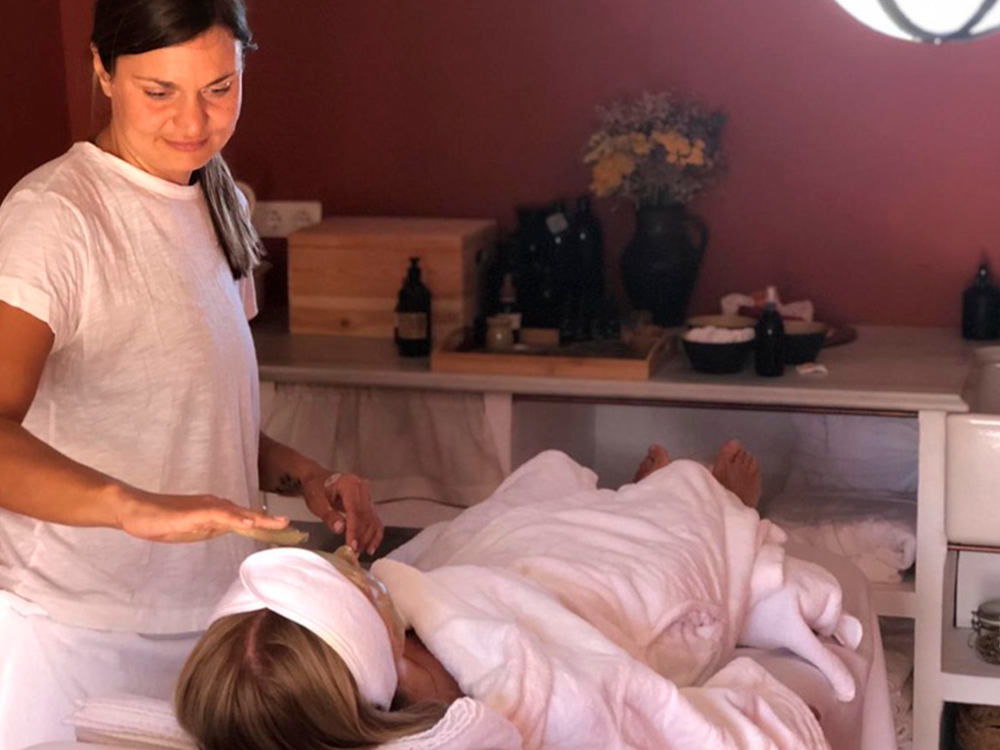MASSAGES AND THEIR BENEFITS

Massage is the manipulation of soft tissues in the body. Through the use of hands- on techniques the masseuse is able to stimulate our circulation, relieve tension and encourage relaxation and balance on a body, mind and emotional level. This ancient art of healing has evolved into one of the most commonly practiced forms of holistic therapy and is enjoyed by millions of people globally.
The roots of present massage therapy are found in various ancient cultures. The first known text called ¨The Emperor´s Classic Book of Internal Medicine¨ originates from China and is dated at around 2700 BCE. It has not been published in English until 1949, however till today is considered a respected source and often used as a textbook for teaching alternative medicine such as acupuncture, acupressure and herbology. Egyptian paintings dated 2500 BCE display images indicating that massage was a part of the ancient Egyptian medical culture. Although first known written texts emerge from India around 1500 – 500 BCE, the practice is suspected to have originated around 3000 BCE. That type of massage therapy, also known as ´the art of healing touch´ forms a part of Ayurveda (Life science) and is regarded a basis of holistic medicine, combining aromatherapy, meditation and relaxation.
Then, in the early 1800s Per Henril Ling, a Swedish educator, doctor and gymnast developed the ´Swedish Movement System´, a method that is considered the foundation for Swedish Massage.
Throughout the years these hands- on manipulation techniques have been developed, improved on and nowadays there are many different types of massages being offered worldwide. Despite their differences, the diverse varieties of therapies offered share things in common – their benefits.
Relaxation & Stress Reduction
When stressed and under pressure, cortisol – a stress hormone is released into our bodies. When the levels of cortisol raise high, we can experience insomnia, weight gain, anxiety, digestive problems and migraines. Massage therapy decreases the level of stress hormones and enables the body to recover. This form of stimulation improves the mood and triggers instant and lasting feelings of relaxation. If received regularly, over a period of time, massage therapy will boost energy levels and stimulate positively on a physical and emotional level.
Regulates Blood Pressure & Mood
Past studies have shown that consistent massage sessions reduce blood pressure, both systolic and diastolic. Lower blood pressure levels can reduce the risk of conditions such as heart attack, stroke, kidney failure and many others. Additionally, regular rubs can also decrease trigger sources for tension, anxiety and depression.
Muscular Relief, Improved Circulation & Posture
One of the main goals of massage is to target the source of the body´s pain through muscular tension release. Regular massages will increase the body´s flexibility and provide relaxation for the body as a whole. Through hands- on pressure application, blood is moved through damaged and blocked areas of the body. The release of that same pressure, causes new, fresh blood flow into tissues, therefore improving the overall circulation in the body. This rich in nutrients and oxygen blood is then able to flow freely through the body.
As a vast number of the population suffers from bad posture, chronic aches, physical strains and aches. Consistent and regular massage therapy sessions have proven to help get the body back into proper alignment. Improving one´s posture is probably one of the most beneficial aspects of this type of remedy, as massage allows relaxation to occur, to loosen the muscles previously sore and tense due to bad posture- which aids and allows the body to position itself in its organic and pain free state.
Plus, massage therapy also releases endorphins-pain killing hormones, which boost the dopamine and serotonin levels in the body – the happy hormones. This might be one of the reasons we like massages so much, they make us simply happy, peaceful and relaxed.




